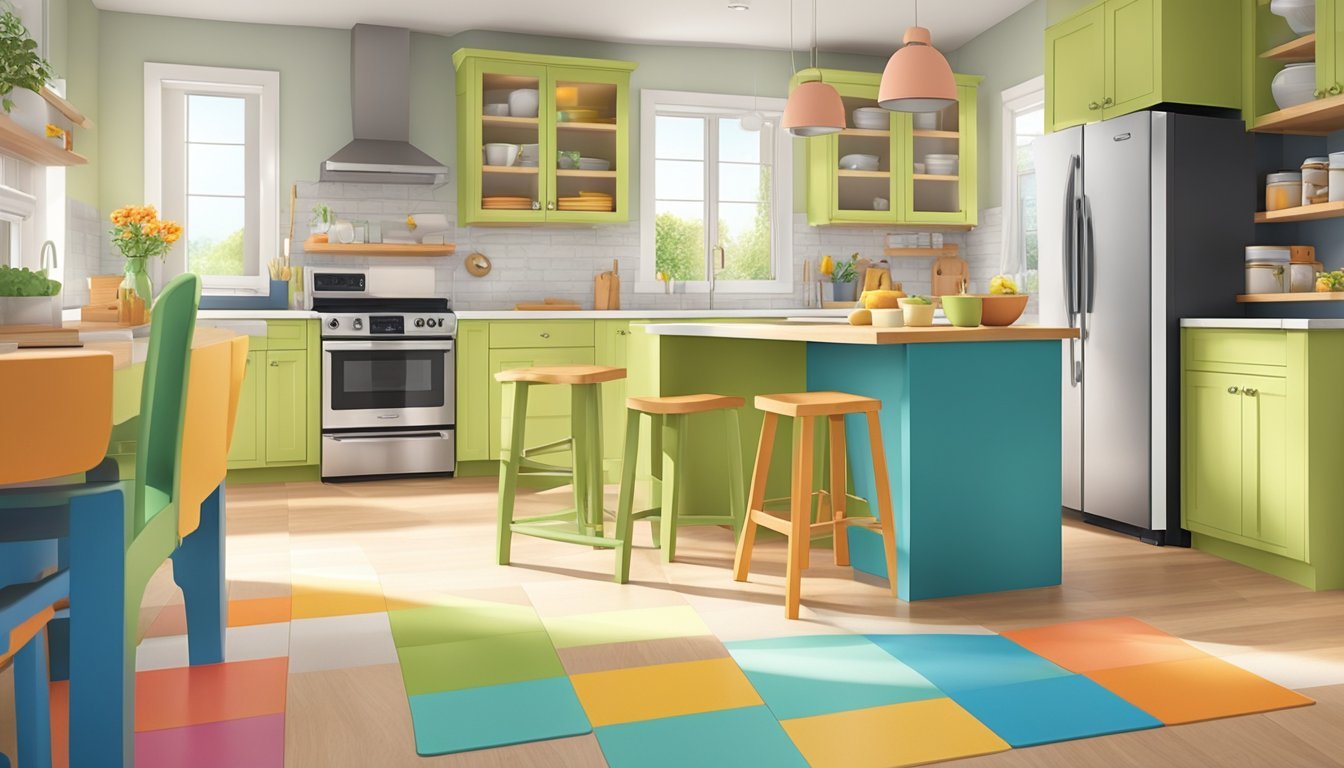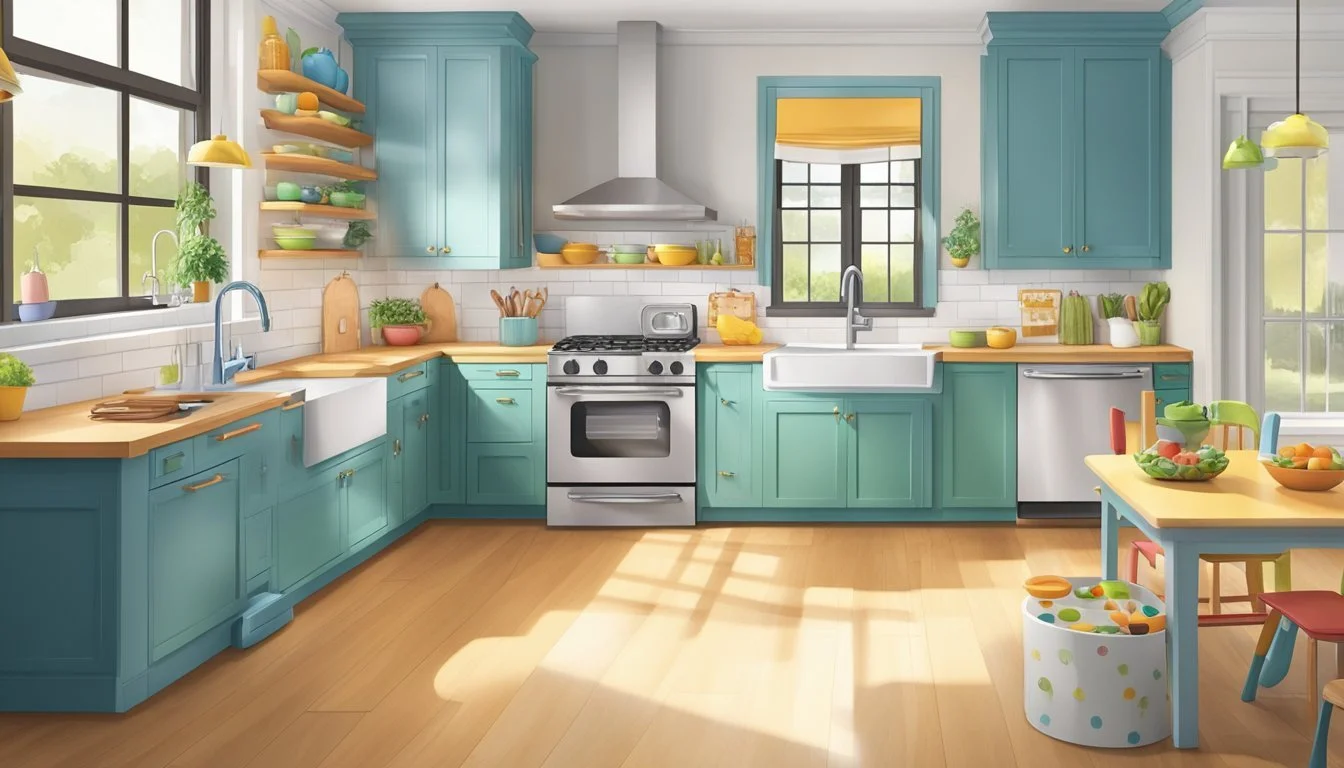How to Create a Kid-Friendly Kitchen Environment
Safety and Fun Combined
Creating a kid-friendly kitchen environment is an essential step towards nurturing independence and fostering a love for cooking among children. A kitchen designed with kids in mind caters to their abilities and safety, allowing them to explore culinary activities without undue risk. By incorporating elements that are accessible and appealing to children, parents and caregivers can significantly reduce hazards and create a welcoming space for the entire family to enjoy meal preparation together.
Adjustments such as child-sized utensils and safe cookware encourage participation and help children develop skills in the kitchen. Safety features like induction cooktops, which heat only the pot or pan while keeping the surrounding area cool, and touch-free faucets can prevent accidents. A consideration for layout and organization ensures that commonly used items are within easy reach of younger family members, promoting a sense of autonomy and responsibility.
In addition to practical modifications, establishing a dedicated area where children can engage in kitchen activities enhances their learning experience. Whether it's a lowered countertop section for easy access or a designated zone for culinary experiments, these tailored adaptations make the kitchen a more inviting and kid-friendly place. With thoughtful integration of kid-oriented design, the kitchen can transform into a hub of creativity and learning for children, instilling valuable life skills and fostering family bonding.
Designing a Safe Kitchen Space
Creating a safe kitchen space involves careful consideration of features that prevent accidents and ensure the protection of children. From integrating childproof solutions to selecting appropriate materials, the key lies in a design that prioritizes the welfare of the youngest family members.
Incorporating Child Locks and Safety Measures
Ensuring the safety of cabinets and drawers is crucial in a kid-friendly kitchen. Childproof locks on cabinets and drawers are essential to keep harmful substances and dangerous utensils out of reach. One can install simple adhesive locks or magnetic locking systems that are both effective and inconspicuous.
Selecting Durable, Kid-Friendly Materials
The choice of durable materials is paramount in a space where children learn and play. Surfaces such as quartz or laminate are robust and easy to clean, resisting stains and scratches. For flooring, options like cork or textured vinyl offer slip resistance, adding an extra layer of safety.
Opting for Rounded Edges and Safe Furniture
Sharp corners can be a hazard in any environment frequented by children. Opting for countertops, tables, and other pieces of furniture with rounded edges significantly reduces the risk of injury. This design choice, alongside child-sized furniture that fits their stature, allows kids to navigate the kitchen safely.
Creating a Functional Kitchen Layout
Crafting a kid-friendly kitchen environment demands attention to layout, ensuring functional spaces for children's participation, accessibility to kitchen tools, and safe, comfortable seating arrangements.
Incorporating Kid-Friendly Workstations
Designated workstations are essential for a kitchen that welcomes children's involvement. One should consider lower countertops or adjustable platforms to accommodate various heights, providing a secure space for children to engage in meal preps. Accessible and safe induction cooktops can be incorporated, where only the area under the cookware heats up, reducing burn risks significantly.
Strategic Storage Solutions and Utensil Access
Storage is a key component in a child-conscious kitchen. Lower cabinets and drawers equipped with safety locks can house kid-friendly utensils, allowing easy access for the young chefs while keeping sharp tools out of reach. Utilizing clear storage containers can help children easily identify contents and contribute to meal preparation with less adult intervention.
Kid-Friendly Utensils: Plastic knives, measuring cups, mixing bowls
Safety Locks: On cabinets and drawers containing hazardous items
Low Shelving: For storing children’s cooking gear within easy reach
Designating Spaces With Kid-Friendly Seating
For a kitchen to be truly inclusive, seating areas must cater to the younger members of the household. A kitchen island with adjustable stools or a built-in nook can provide the appropriate height and comfort for kids. Additionally, seating should be situated away from the cooking zones to maintain safety during meal preparations.
Enhancing Kitchen Learning Opportunities
Creating a kid-friendly kitchen environment extends beyond safety and accessibility; it involves transforming the space into an engaging learning hub. This section will outline specific strategies to utilize vertical spaces and incorporate child-friendly tools like step stools and learning towers to enrich the educational experience.
Utilizing Vertical Spaces for Education
Incorporating vertical surfaces such as chalkboards or whiteboards on pantry doors or cabinet ends can serve multiple educational purposes. They provide an area for kids to express creativity through drawing, and a space for writing out grocery lists or menu plans, reinforcing literacy and organizational skills. Strategically placed shelves on walls can house educational materials or ingredients, facilitating learning about counting, measuring, and categorizing in a natural setting.
Use of Vertical Spaces Educational Benefit Chalkboard/Whiteboard Creativity, Literacy Custom Shelves Math, Organization
Providing Step Stools and Learning Towers
Toddler safety in the kitchen can be improved with the provision of a learning tower—a sturdy, enclosed platform that allows children to safely reach counter heights. This access fosters independence and encourages participation in cooking activities, providing practical lessons in following instructions and understanding processes. Children can observe preparations directly, assisting in simple tasks as they stand securely on the learning tower or a sturdy step stool.
Tool Purpose Learning Tower Safe height access, Independence Step Stool Mobility, Task participation
Promoting Kid-Friendly Kitchen Practices
Creating a kid-friendly kitchen environment is about combining safety and ease. It involves utilizing kid-friendly utensils and emphasizing easy clean-up while teaching and following vital safety measures during cooking activities.
Easy Clean-Up and Maintenance
A kid-friendly kitchen should favor surfaces and materials that are easy to clean and maintain. Parents may choose finishes that can be quickly wiped down without the need for harsh chemicals, thus making the aftermath of cooking with kids a less daunting task. For instance, stainless steel appliances, quartz countertops, and laminate flooring can be excellent choices in this regard. Additionally, the use of machine-washable rugs can help contain spills.
In terms of organization, having dedicated drawers or cabinets for children's kitchen items makes access easier for them. Storing kid-friendly utensils like plastic knives, bowls, and cutlery at an appropriate height encourages autonomy while keeping the space tidy.
Safety Tips for Cooking With Kids
When it comes to safety, certain practices and tools are important for safeguarding children in the kitchen. An induction cooktop is preferable for families with children, as it only heats the area under the cookware, significantly reducing the risk of burns. Always supervise children closely and teach them safe handling of kitchen equipment.
Moreover, ensuring that kids have the appropriate protective gear, such as oven mitts and aprons, furthers the emphasis on safety. Here is a checklist of safety measures to consider when cooking with kids:
Teach safe knife skills: Using child-friendly utensils, instruct them on proper cutting techniques and always supervise their use.
Use back burners first: When cooking on a stovetop, use the back burners to place hot pots and pans out of children's reach.
Keep handles turned in: Ensure pot and pan handles are turned inward and away from the edge to prevent accidental spills.
By integrating these practices, adults can create a kitchen that nurtures children's independence and interest in cooking while maintaining a clean, orderly, and safe environment.
Final Thoughts on Kitchen Remodeling for Families
When embarking on a kitchen remodel with family in mind, it is essential to consider adjustments that prioritize well-being and to incorporate spaces that foster family togetherness.
Considering Long-Term Adjustments for Well-Being
A family-focused kitchen remodel should include features that ensure the long-term well-being of its occupants. Quartz countertops are an excellent choice for families due to their durability and ease of maintenance. Non-porous and scratch-resistant, quartz counters offer a safe and hygienic surface for food preparation. When selecting materials and appliances, it's important to think about their life-span and safety features to continue meeting the family's needs as children grow.
Breakfast Nook: A Place for Family Gathering
The addition of a breakfast nook creates a dedicated space for family gatherings and shared meals. This informal area can be a cozy corner where comfortable seating encourages togetherness and conversation. The proximity to the kitchen allows parents to supervise children or help with homework while prepping or cooking meals, strengthening family bonds in both casual and structured activities.




